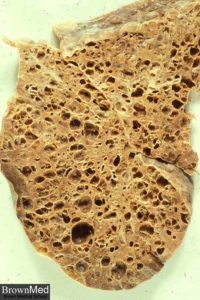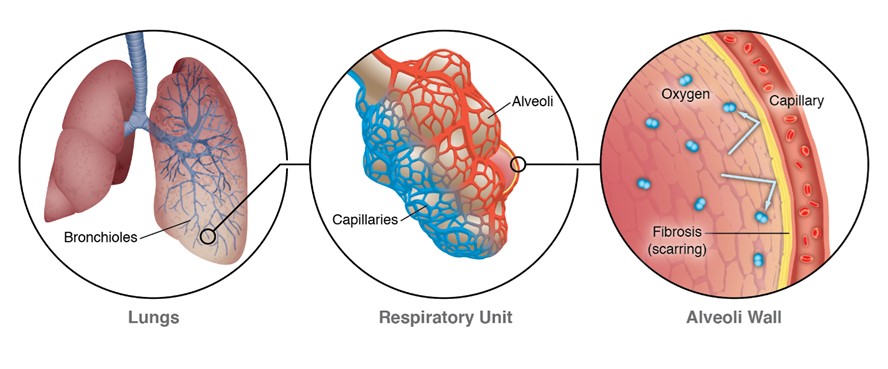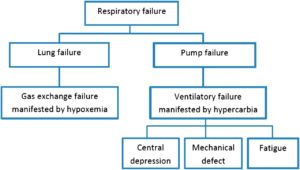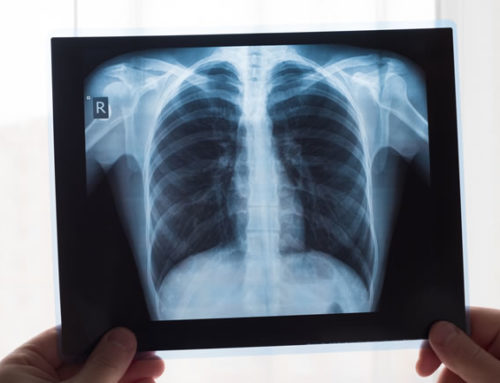Interstitial lung diseases (ILD) also called Diffused parenchymal lung diseases (DPLD) are a group of diseases which are characterized by bilateral, patchy pulmonary fibrosis. In these diseases mainly the alveoli, interstitial spaces, basement membrane, alveolar epithelium, interstitial vasculature, perivascular and perilymphatic tissues are affected. Damage to concerned sites lead to abnormal ventilation-perfusion ratio which further leads to hypoxia. In such conditions, the physicians conduct a chest radiograph to observe typical ground-glass shadows. The characteristic pathologic and histologic features categorize the diseases falling under ILD. If prompt measures are not taken the condition of patient can worsen causing scarring and gross destruction of lung. Respiratory failure, pulmonary hypertension and cor pulmonale are common complications. In end stage, the lung is called honey-comb due to its gross appearance.

Figure 1: Honeycomb Lungs
Interstitial Lung Disease Causes
Interstitial Lung Diseases are caused by wide range inhalants, medical conditions as well as idiopathic backgrounds can trigger a series of abnormal events for the healing process. These inhalants include silica dust, asbestos fibers, grain dust, animal droppings, coal dust, metal dust, talc and radiation treatments. Other than inhalants medical conditions like rheumatoid arthritis, scleroderma, sarcoidosis, Sjogren’s syndrome and mixed connective tissue disease can damage lungs. In order to recover, body produces tissue to repair the damage. Repeated healing mechanisms lead to accumulation of tissue around alveoli making them thick and scarred. This ultimately leads to difficulty in gaseous exchange at the site of alveoli due to which tissues receive insufficient supply of oxygen.

Figure 2: https://www.nationaljewish.org/conditions/interstitial-lung-disease-ild/ild
Interstitial Lung Disease Symptoms
As soon as ILD happens to an individual the symptoms take some time to appear unless it is acute interstitial pneumonitis. As compared to other ILD in this disease shortness of breath occurs within few hours or days. Shortness of breath is accompanied with worsening cough and weight loss. As the time progresses, the symptoms worsen. Unfortunately, when the symptoms first appear enough irreversible lung damage is already done. Even then it is necessary to consult a doctor.
The pathologic and histological findings classify them into following diseases;
- Interstitial pneumonia; most commonly caused by bacteria called Mycoplasma pneumonia.
- Idiopathic pulmonary fibrosis; thick scar tissue grows in the interstitium.
- Non-specific interstitial pneumonitis; often affects the individuals fighting with autoimmune disorders such as rheumatoid arthritis.
- Hypersensitivity pneumonitis; usually occurs in individuals who inhale mold, dust, silica, coal dust for a long period of time.
- Cryptogenic organizing pneumonia; a specific kind of pneumonia in which no infection takes place.
- Acute interstitial pneumonitis; severe and fatal lung disease in which the patient is often kept alive with the help of a ventilator.
- Desquamative interstitial pneumonitis; typically results from smoking.
Interstitial Lung Disease Complications
Severe and untreated ILD can lead to quite harsh complications. Most commonly observed complications include;
- Pulmonary hypertension
The scarring severely affects the arteries in lungs due to which blood flow is restricted.
- Cor pulmonale
The right ventricle experiences increased strain to pump blood due to pulmonary hypertension. This is often called “Right heart failure”.
- Respiratory failure
The blood oxygen level is too low which causes increased pressure in pulmonary arteries. Force exerted by right ventricle multiplies leading to heart failure.

Figure 3: https://pedsinreview.aappublications.org/content/35/11/476
Interstitial Lung Diseases (ILD) can be treated with adequate attention. Medicines, pulmonary rehabilitation, oxygen therapy and lung transplant are active treatment options depending upon the severity of condition.


